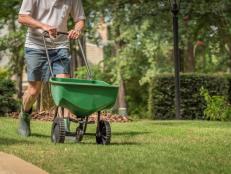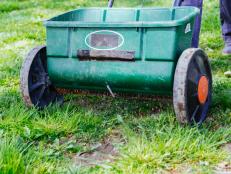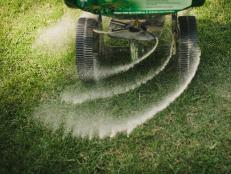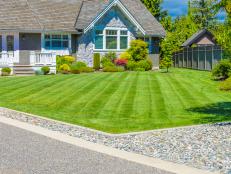Lawn Patrol: Renovate or Redo Your Lawn Landscaping?


Julie Martens Forney
I’d been battling weeds in my lawn for years. I’d had some success digging up weeds, overseeding and patching bare spots, but the daily car drive past my neighbor’s yard with nary a blade of grass out of place reminded me I had a long way to go before reality matched my vision of a lush lawn. This was my first home, and the battlefield was a hodgepodge of various grasses and weeds that had several years’ head start by the time I moved in. Progress was slow — too slow for me.
I’d come to a point where I had a decision to make: continue to renovate my lawn or rip it out and start from bare dirt.
How to make that choice is a topic that Wendy Wilber, an environmental horticulture agent, says comes up a lot during her “turf boot camp” class. In that class she teaches Alachua County, Florida, residents how to win the battle with weeds. “Lawns are a big investment,” says Wilber. “They’re really a point of pride for a lot of people, even if it’s a small lawn.”
So, which approach should you take? The first step toward deciding whether to slowly rehab your lawn or start over, says Wilber, is figuring out why your lawn is failing. Could there be a problem with soil pH? Is there a drainage issue that might make growing grass difficult or impossible without re-routing the water? Does your lawn get enough sunlight? Contact your local extension agent for help answering these questions. You might learn you need to grow a different type of grass entirely. Consult with your extension agent on what type of grass will work best in your situation. Or you might want to put in a flower bed instead. Or maybe your lawn just needs a little TLC.
“If yours is just a lawn gone bad due to neglect, then maybe lawn renovation is the way to go,” says Wilber.
Something else to consider: What percentage of your lawn is struggling? Renovating a lawn clearly takes some work. But completely replacing a lawn can cost big bucks. Of course you’ll want to factor in the size of your lawn, but Wilber suggests you might want to go with a complete redo if more than half of your grass has weeds or bare spots.
If you decide on a redo, give your lawn the best chance for success by removing the existing grass and weeds completely, either with a quality herbicide or an alternative such as using plastic to smother what’s below.
Think about how much time you realistically will be able to devote to caring for your lawn, both while it’s establishing itself and afterward. If you have limited time or travel frequently, you may want to consider hiring a pro to help you keep a lawn care schedule.
Consider laying your new sod during the cooler months when it won’t dry out as quickly. And buy a quality sod even if it costs a little more, says Wilber.
In my case, I decided to dig up my entire lawn and start from scratch. A few weeks later, I had a brand new, green carpet of lush fescue. It was beautiful…
Then we moved into a house down the street.













































